Submitted by WA Contents
Zaha Hadid designs new Maths Gallery at the London Science Museum
United Kingdom Architecture News - Sep 11, 2014 - 12:54 10435 views
Unprecedented £5 million donation and world-renowned architect combine to bring mathematics to life at the Science Museum
• Science Museum receives largest ever individual donation from the David and Claudia Harding Foundation to support ambitious mathematics project
• Zaha Hadid Architects win competition to design world’s foremost gallery of mathematics
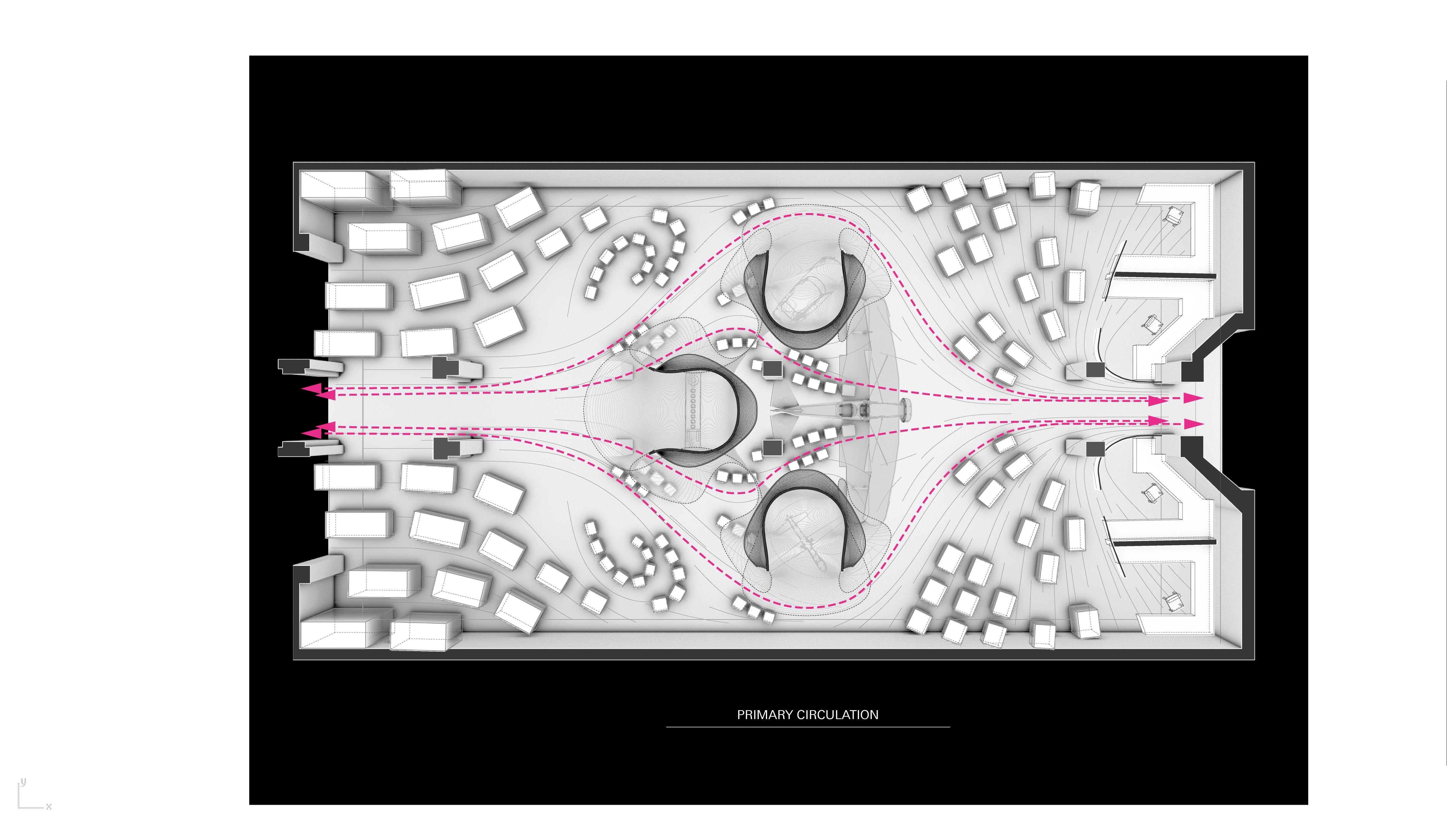
Plan Diagram of the Mathematics Gallery - its arrangement follows the Handley Page aeroplane exhibit's turbulence field
Zaha Hadid Architects have been chosen by the Science Museum to design a pioneering new mathematics gallery, made possible by the largest individual donation ever made to the museum from long-standing supporters of science David and Claudia Harding.
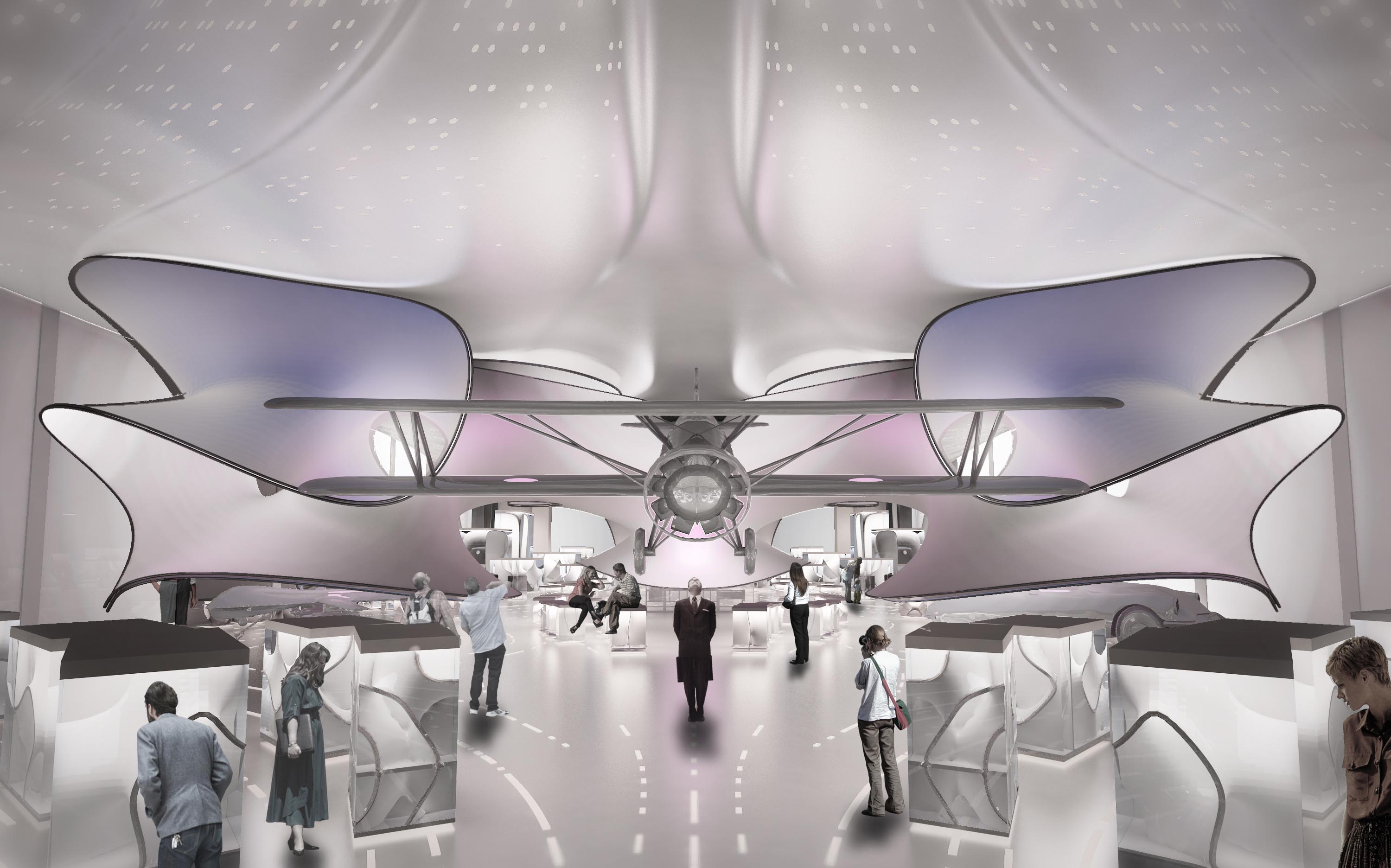
View from East gallery entrance
Welcoming the £5 million gift, Science Museum Director, Ian Blatchford said: “David and Claudia stand out among philanthropists as dedicated champions of science. We are determined to match their enormous generosity with the ambition we show in harnessing our world-class collections to tell the stories of how mathematicians have helped to shape the world. This is a game-changing gift to the museum, and it is my hope that this will inspire further transformational philanthropy.
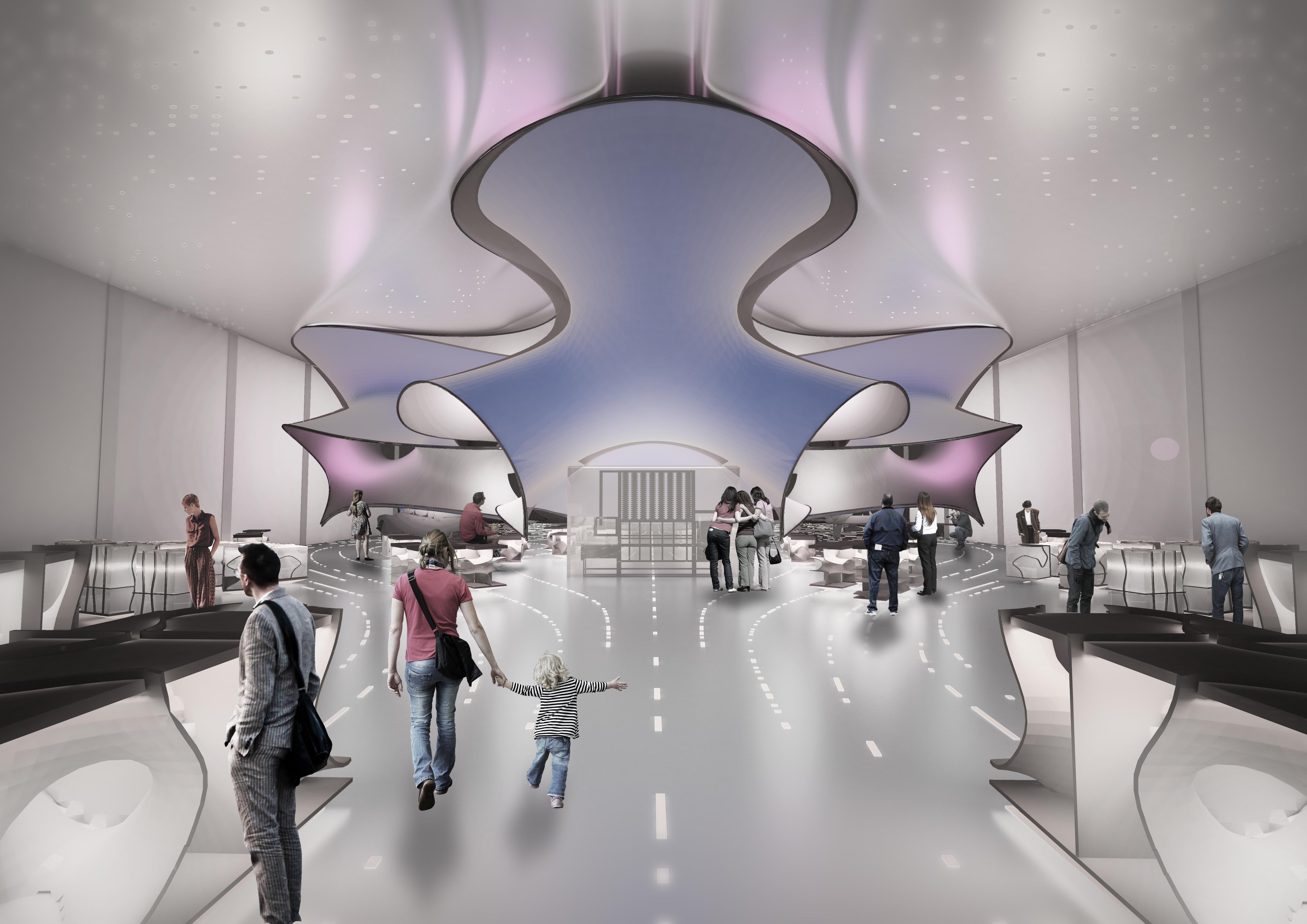
View from West gallery entrance
“With this gallery we want to evoke the kind of excitement around mathematics as our Collider exhibition has done around particle physics and with Zaha Hadid’s extraordinary designs this project is off to the best start imaginable. This appointment reflects our ambition to deliver the world’s foremost gallery of mathematics both in its collection and its design.”
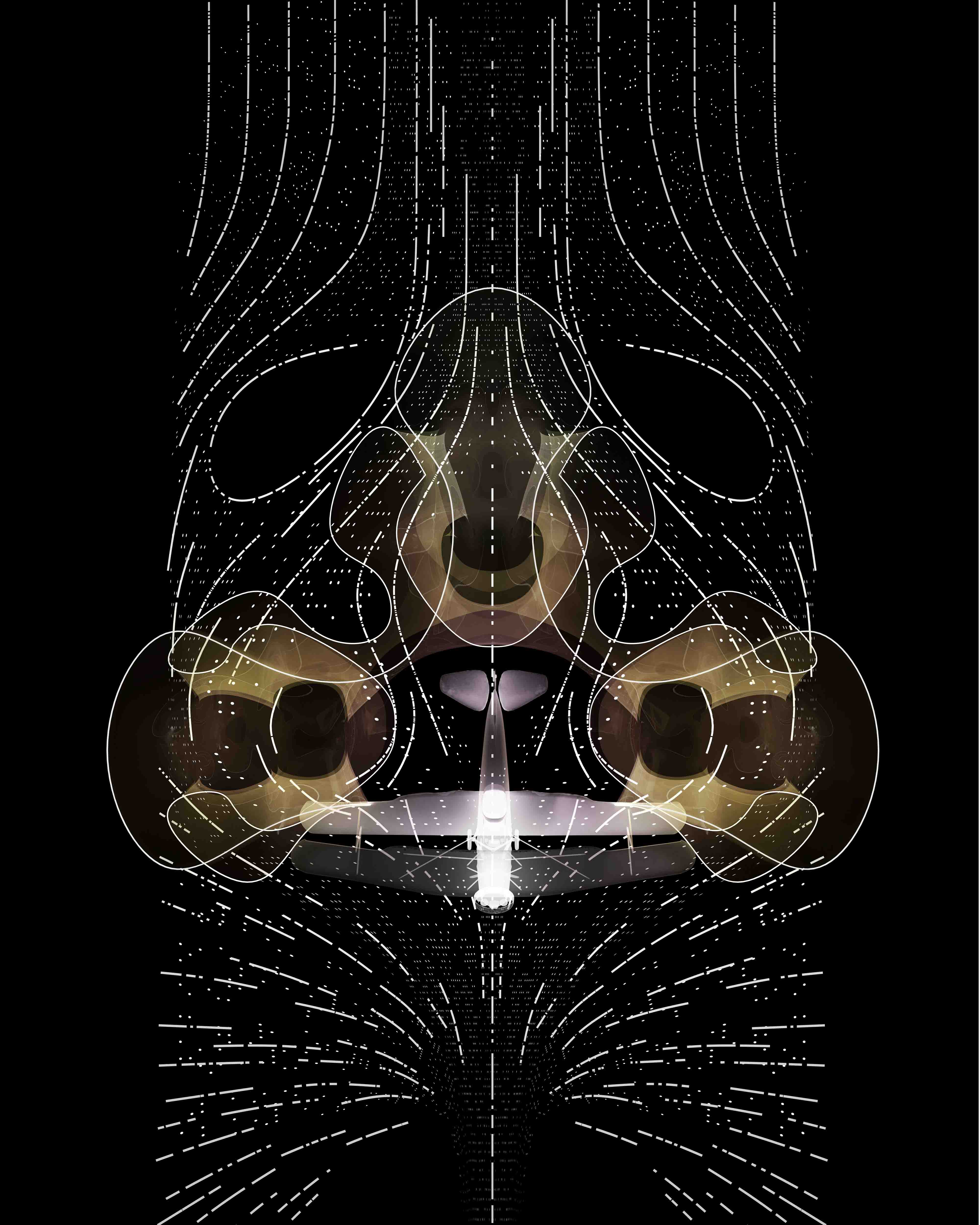
Top view of Handley Page aeroplane exhibit - its turbulence field used to organize exhibition zones and displays
The permanent gallery will tell stories that place mathematics at the heart of our lives, exploring how mathematicians, their tools and ideas have helped to shape the world from the turn of the 17th century to the present. Zaha Hadid’s pioneering practice has embodied this idea by anchoring engineering and mathematical thinking throughout their designs.

Top view of Handley Page aeroplane exhibit - its turbulence field used to organize exhibition zones and displays
Zaha Hadid, who studied maths at the American University in Beirut, said: “The design explores the many influences of mathematics in our everyday lives; transforming seemingly abstract mathematical concepts into an exciting interactive experience for visitors of all ages.”
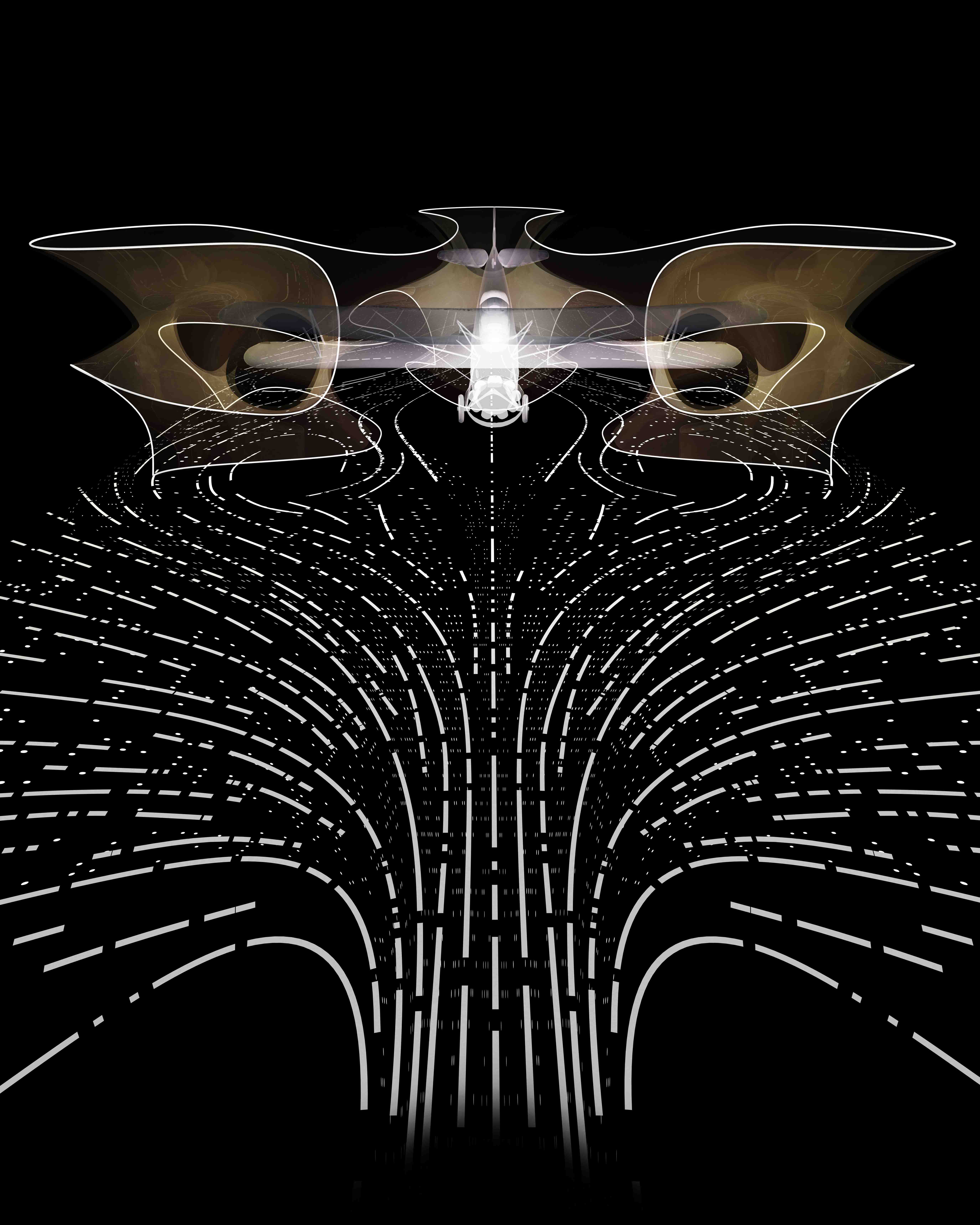
Front view of Handley Page aeroplane exhibit - its turbulence field used to organize exhibition zones and displays
David Harding has a long record of working with the Science Museum Group, both as an individual and through the business he founded, Winton Capital Management. Recent projects include support for the Collider exhibition and tour, Information Age and the Science Museum’s educational work. He said: “We hope the gallery will bring pleasure and interest to Science Museum visitors and feel privileged to be able to associate ourselves with it. Mathematics is a fascinating and mysterious but, for some, forbidding subject. The new gallery has been created to convey something of that fascination in a way that will appeal to a wide audience.”

Display Case forms - a series produced by variations within a singular mathematical equation
The David and Claudia Harding Mathematics Gallery will open in 2016 and will be curated by David Rooney, who led the delivery of the award-winning Codebreaker exhibition about the life of Alan Turing.
Secretary of State for Culture, Media and Sport, the Rt Hon Sajid Javid said: “Mathematics is an absolutely vital part of a rounded education. So it is great news that the Science Museum is to have a new gallery, helping to bring it alive and make it meaningful for everyone. And with Zaha Hadid to design it, I’m sure the end product will delight and amaze all who come to see it.
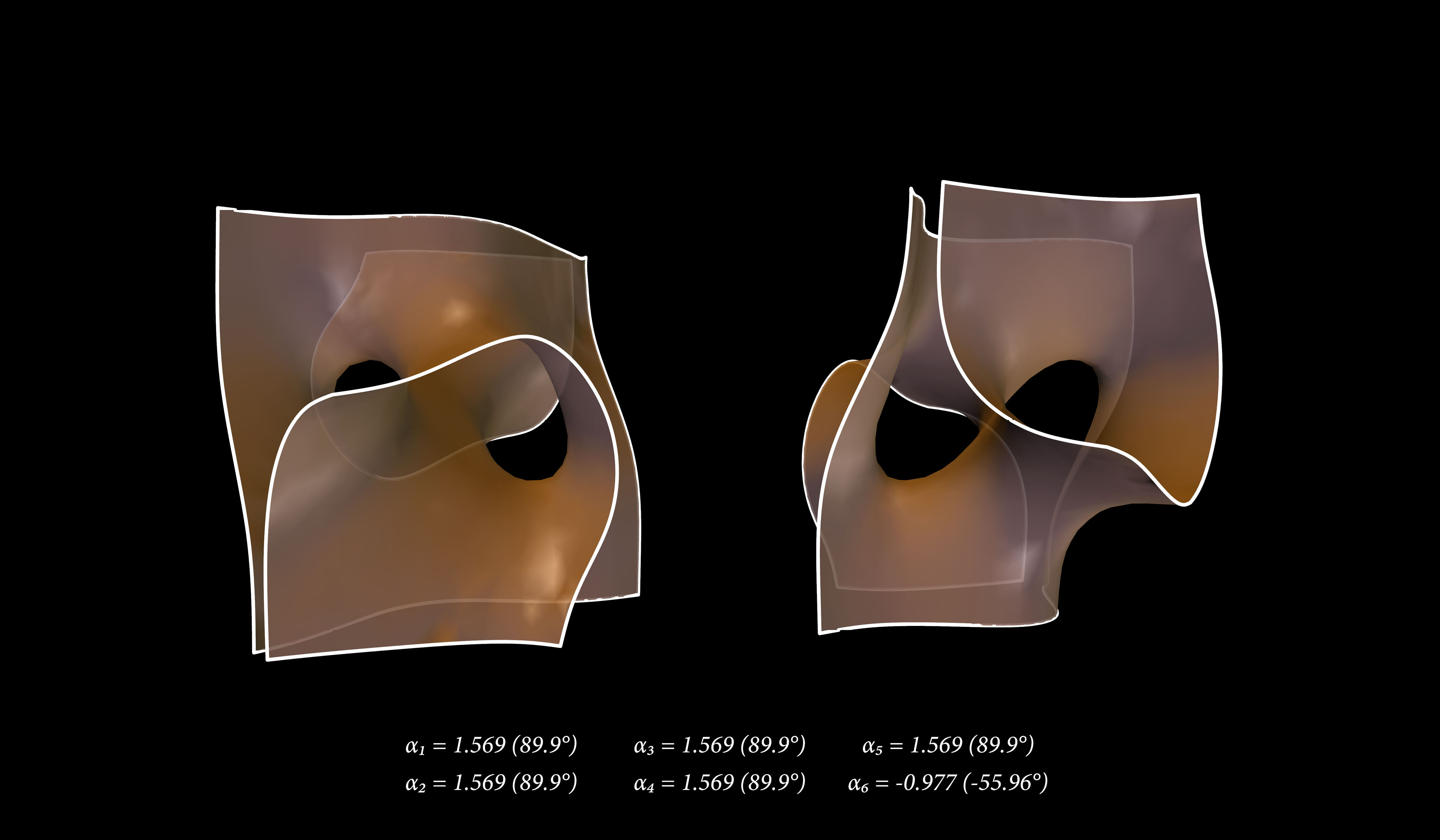
Study of 3D surface variations produced by singular equation
“But this would not be possible without the outstanding generosity of David and Claudia Harding. Their philanthropic gesture creates a legacy which will benefit millions for generations to come.”
Sir Paul Nurse, President of the Royal Society, said: “Galileo once stated that the ‘book of nature is written in mathematical characters’. However, in a country as good at science as the UK it is vexing that people will openly laugh about being bad at maths while they would be ashamed to admit that they are bad at reading. It is great news that the Science Museum, which has so many young people coming through its doors every year, is going to celebrate both the importance and the joy of maths.”
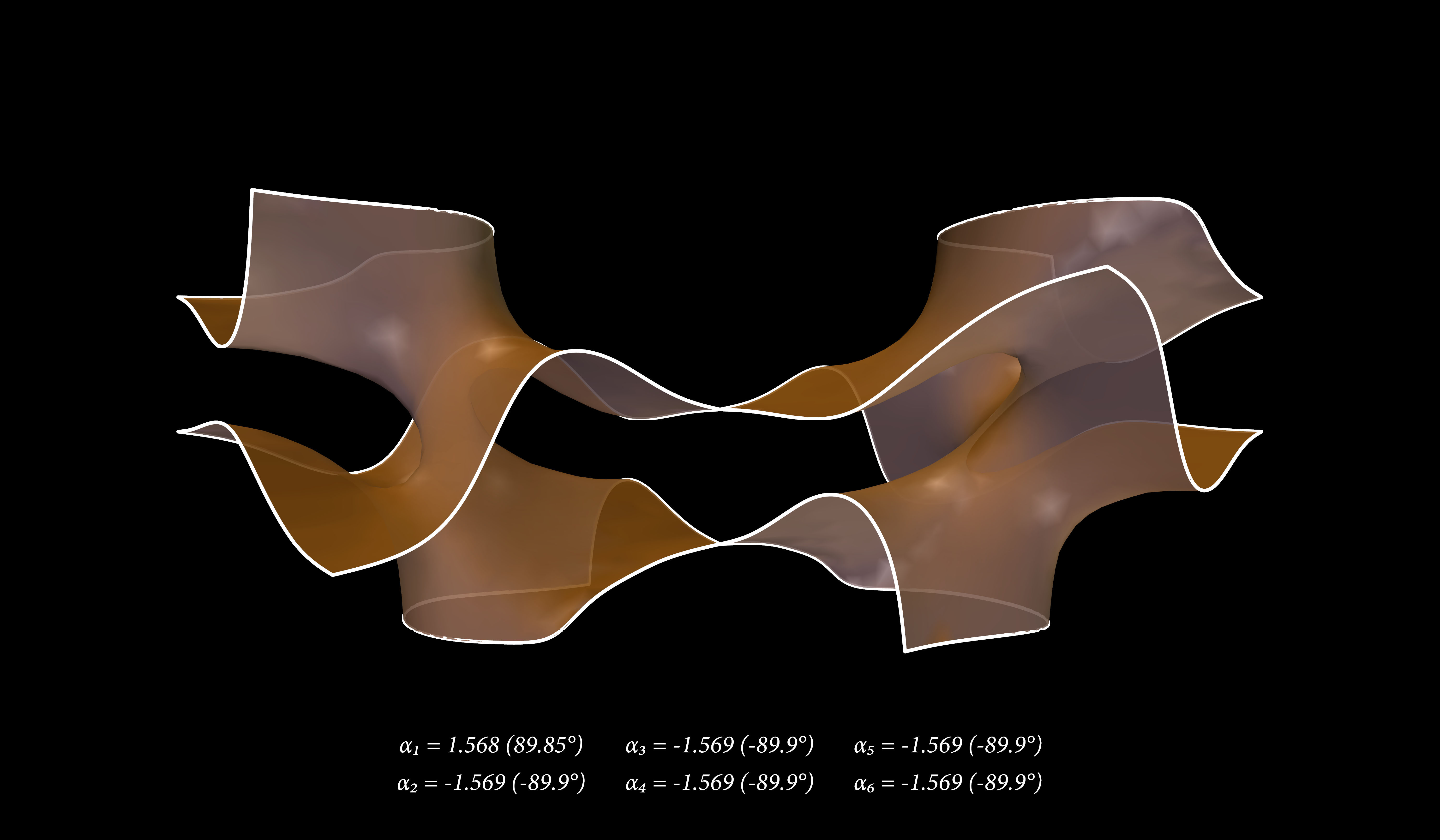
Study of 3D surface variations produced by singular equation
The Mathematics Gallery is being delivered as part of the Science Museum’s Masterplan, which will transform around a third of the museum over the next five years.
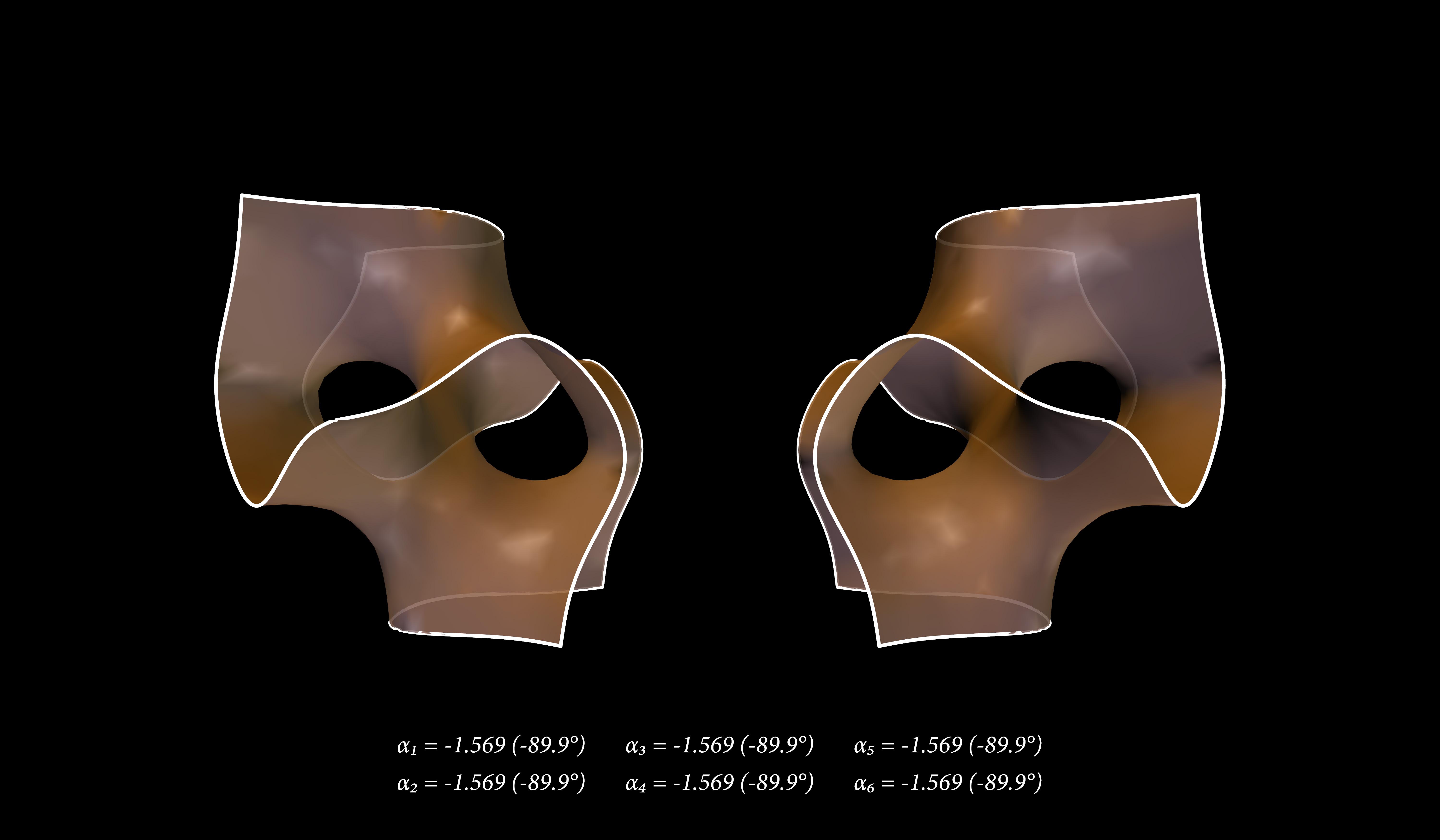
Study of 3D surface variations produced by singular equation
Design Description
The Mathematics Gallery design explores the many influences of mathematics in our everyday lives; transforming seemingly abstract mathematical concepts into an exciting interactive experience for visitors of all ages.
The Science Museum’s collection tells the stories of key scientific and technological developments and the people behind them. The new Mathematics Gallery will engage its visitors by connecting the gallery’s objects to their mathematical ideas and demonstrating how they work - helping visitors to understand how each object was designed and built, and also outlining its social and cultural significance. The gallery’s design will encourage visitors to be inquisitive and discover links between the historic objects and contemporary experience.
The varied collection exhibited in the gallery will be divided into three zones: mathematicians; mathematical applications in our everyday lives; mathematical tools and ideas. However, the fluid organization of the gallery’s design will invite curators and visitors to establish connections that transcend every zone, mirroring the integrated nature of mathematics applications in all aspects of life.
The largest object to be exhibited within the gallery will be a 1929 biplane suspended from the ceiling. This experimental British aircraft made by Handley Page competed in the finals of the 1927 competition to design an aircraft that could take off and land slowly and steeply without stalling. The mathematics of aerodynamics and material stress embodied within the biplane’s design involved the modelling of complex interactive equations. This research profoundly advanced aviation technology and understanding at the very beginnings of civilian air travel.
The gallery’s design will bring this remarkable story of the Handley Page biplane to life by considering the entire gallery as a wind tunnel for the aircraft which will hang in the centre of the space. Three-dimensional curved surfaces representing the aircraft’s aerodynamic turbulence field describe the formal and organizational concepts that define all other aspects of the gallery. These curvilinear surfaces convey complex mathematical ideas such vector-fields with their capacity to describe constantly-varying quantities. The gallery’s many different display cases and three central exhibition pods will embody these same formal concepts by applying a family of mathematics called minimal surfaces.
The new Mathematics Gallery will engage its visitors with an immersive experience of the mathematical and convey many of the fascinating stories of mathematicians that have shaped our history and continue to define our future.
Project Facts
Client
The Science Museum, London UK
Director: Ian Blatchford
Architects
Architects: Zaha Hadid Architects (ZHA)
Design: Zaha Hadid and Patrik Schumacher
ZHA Project Director: Charles Walker
ZHA Lead Designer: Shajay Bhooshan
ZHA Project Architect: Bidisha Sinha
ZHA Project Team:Shajay Bhooshan, Bidisha Sinha, Mostafa El Sayed, Suryansh Chandra, Vishu Bhooshan
ZHA Competition Team:Design Team: Shajay Bhooshan, Mostafa El Sayed , Suryansh Chandra, Vishu Bhooshan, Henry David Louth, Weber Ramon Elias
Consultants
Structure / M&E: Arup
Cost Consultant: Gardiner & Theobald
Project Manager: Turner & Townsend
> via Zaha Hadid Architects